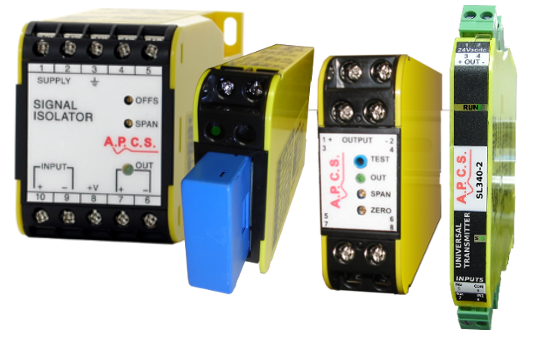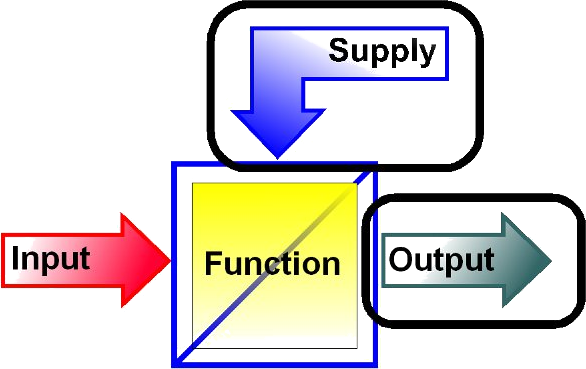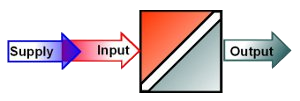4-20mA Output Outputs

Select products by Output then Input and then Function.
The number of wires (e.g. 2-Wire) listed refers to the number of connections to power the Transmitter and connect the output.
Find a Product Output ⇒ Function ⇒ Input
- 4-20mA 2-Wire
- 4-20mA 2-Wire, Select a Function
- ac Transducer
- 4-20mA 2-Wire ac Transducer, Select Input Group
- ac A
- 4-20mA 2-Wire ac Transducer ac A, Select Product
- ACT241 ac Current Transducer

- ac V
- 4-20mA 2-Wire ac Transducer ac V, Select Product
- AVT245 ac Voltage Transducer


- Isolator
- 4-20mA 2-Wire Isolator, Select Input Group
- ac A
- 4-20mA 2-Wire Isolator ac A, Select Product
- ACT241 ac Current Transducer

- ac V
- 4-20mA 2-Wire Isolator ac V, Select Product
- SI239 Signal Isolator
- AVT245 ac Voltage Transducer

- 4-20mA
- 4-20mA 2-Wire Isolator 4-20mA, Select Product
- SI231 Signal Isolator
- SI239 Signal Isolator

- dc mA/V
- 4-20mA 2-Wire Isolator dc mA/V, Select Product
- SI231 Signal Isolator
- SI239 Signal Isolator

- mV
- 4-20mA 2-Wire Isolator mV, Select Product
- MVT223 Millivolt Transmitter
- SI239 Signal Isolator

- RTD
- 4-20mA 2-Wire Isolator RTD, Select Product
- RTDT225 RTD Temperature Transmitter

- Thermocouple
- 4-20mA 2-Wire Isolator Thermocouple, Select Product
- TCT226 Thermocouple Transmitter

- Conductivity
- 4-20mA 2-Wire Isolator Conductivity, Select Product
- CDT228 Conductivity Transmitter

- pH/REDOX
- 4-20mA 2-Wire Isolator pH/REDOX, Select Product
- PHT229 pH / Redox Transmitter

- Resistance
- 4-20mA 2-Wire Isolator Resistance, Select Product
- RT243 Resistance Transmitter

- Speed/ Frequency/ Pulse
- 4-20mA 2-Wire Isolator Speed/ Frequency/ Pulse, Select Product
- FRT250 Frequency Transmitter

- Strain Gauge
- 4-20mA 2-Wire Isolator Strain Gauge, Select Product
- WT227 Strain Gauge Transmitter


- Transmitter
- 4-20mA 2-Wire Transmitter, Select Input Group
- ac A
- 4-20mA 2-Wire Transmitter ac A, Select Product
- ACT241 ac Current Transducer

- ac V
- 4-20mA 2-Wire Transmitter ac V, Select Product
- SI239 Signal Isolator
- AVT245 ac Voltage Transducer

- 4-20mA
- 4-20mA 2-Wire Transmitter 4-20mA, Select Product
- SI231 Signal Isolator
- SI239 Signal Isolator

- dc mA/V
- 4-20mA 2-Wire Transmitter dc mA/V, Select Product
- SI231 Signal Isolator
- SI239 Signal Isolator

- mV
- 4-20mA 2-Wire Transmitter mV, Select Product
- MVT223 Millivolt Transmitter
- SI239 Signal Isolator

- RTD
- 4-20mA 2-Wire Transmitter RTD, Select Product
- RTDT225 RTD Temperature Transmitter

- Thermocouple
- 4-20mA 2-Wire Transmitter Thermocouple, Select Product
- TCT226 Thermocouple Transmitter

- Conductivity
- 4-20mA 2-Wire Transmitter Conductivity, Select Product
- CDT228 Conductivity Transmitter

- Environmental-z
- 4-20mA 2-Wire Transmitter Environmental-z, Select Product
- LUX510 LUX Transmitter
- RTT508 Room Temperature Transmitter
- RLT511 Room Light Transmitter

- pH/REDOX
- 4-20mA 2-Wire Transmitter pH/REDOX, Select Product
- PHT229 pH / Redox Transmitter

- Potentiometer
- 4-20mA 2-Wire Transmitter Potentiometer, Select Product
- SWT240 Resistance Transmitter

- Pressure
- 4-20mA 2-Wire Transmitter Pressure, Select Product
- PIC246 Pressure to Current Converter

- Resistance
- 4-20mA 2-Wire Transmitter Resistance, Select Product
- RT243 Resistance Transmitter

- Speed/ Frequency/ Pulse
- 4-20mA 2-Wire Transmitter Speed/ Frequency/ Pulse, Select Product
- FRT250 Frequency Transmitter

- Strain Gauge
- 4-20mA 2-Wire Transmitter Strain Gauge, Select Product
- WT227 Strain Gauge Transmitter



- 4-20mA 4-Wire
- 4-20mA 4-Wire, Select a Function
- ac Transducer
- 4-20mA 4-Wire ac Transducer, Select Input Group
- ac A
- 4-20mA 4-Wire ac Transducer ac A, Select Product
- SL345 AC and Bipolar Isolator
- DCT247 Dc Current Transducer
- ACT284 ac Transducer
- ACT141 ac Current Transducer

- ac Power
- 4-20mA 4-Wire ac Transducer ac Power, Select Product
- AWT190 Ac Active Power Transducer
- ART191 Ac Active VAR Transducer
- AVAT192 ac Active VA Transducer
- APT193 Ac Active Phase Angle Trans.

- ac V
- 4-20mA 4-Wire ac Transducer ac V, Select Product
- SL345 AC and Bipolar Isolator
- SL350 Pulse Frequency Transmitter
- ACT284 ac Transducer
- AVT145 Ac Voltage Transmitter

- dc A
- 4-20mA 4-Wire ac Transducer dc A, Select Product
- SL345 AC and Bipolar Isolator
- DCT247 Dc Current Transducer

- dc mA/V
- 4-20mA 4-Wire ac Transducer dc mA/V, Select Product
- SL345 AC and Bipolar Isolator

- Speed/ Frequency/ Pulse
- 4-20mA 4-Wire ac Transducer Speed/ Frequency/ Pulse, Select Product
- SL350 Pulse Frequency Transmitter


- Alarm
- 4-20mA 4-Wire Alarm, Select Input Group
- ac A
- 4-20mA 4-Wire Alarm ac A, Select Product
- DTI135 Dual Trippoint Isolator
- STI136 Single Trippoint Isolator

- ac V
- 4-20mA 4-Wire Alarm ac V, Select Product
- DTI135 Dual Trippoint Isolator
- STI136 Single Trippoint Isolator

- Signal Powered
- 4-20mA 4-Wire Alarm Signal Powered, Select Product
- STI136 Single Trippoint Isolator

- 4-20mA
- 4-20mA 4-Wire Alarm 4-20mA, Select Product
- DTI135 Dual Trippoint Isolator
- STI136 Single Trippoint Isolator

- dc mA/V
- 4-20mA 4-Wire Alarm dc mA/V, Select Product
- DTI135 Dual Trippoint Isolator
- STI136 Single Trippoint Isolator

- mV
- 4-20mA 4-Wire Alarm mV, Select Product
- DTI135 Dual Trippoint Isolator
- STI136 Single Trippoint Isolator

- RTD
- 4-20mA 4-Wire Alarm RTD, Select Product
- DTI135 Dual Trippoint Isolator
- STI136 Single Trippoint Isolator

- Thermocouple
- 4-20mA 4-Wire Alarm Thermocouple, Select Product
- DTI135 Dual Trippoint Isolator
- STI136 Single Trippoint Isolator

- Potentiometer
- 4-20mA 4-Wire Alarm Potentiometer, Select Product
- DTI135 Dual Trippoint Isolator
- STI136 Single Trippoint Isolator

- Resistance
- 4-20mA 4-Wire Alarm Resistance, Select Product
- DTI135 Dual Trippoint Isolator
- STI136 Single Trippoint Isolator

- Speed/ Frequency/ Pulse
- 4-20mA 4-Wire Alarm Speed/ Frequency/ Pulse, Select Product
- DTI135 Dual Trippoint Isolator
- STI136 Single Trippoint Isolator


- Isolator
- 4-20mA 4-Wire Isolator, Select Input Group
- ac A
- 4-20mA 4-Wire Isolator ac A, Select Product
- SL345 AC and Bipolar Isolator
- DCT247 Dc Current Transducer
- ACT284 ac Transducer
- ACT141 ac Current Transducer
- DTI135 Dual Trippoint Isolator
- STI136 Single Trippoint Isolator

- ac V
- 4-20mA 4-Wire Isolator ac V, Select Product
- SL345 AC and Bipolar Isolator
- SL350 Pulse Frequency Transmitter
- ACT284 ac Transducer
- AVT145 Ac Voltage Transmitter
- DTI135 Dual Trippoint Isolator
- STI136 Single Trippoint Isolator
- SI139 Signal Isolator

- Signal Powered
- 4-20mA 4-Wire Isolator Signal Powered, Select Product
- STI136 Single Trippoint Isolator

- 4-20mA
- 4-20mA 4-Wire Isolator 4-20mA, Select Product
- SL332 Signal Isolator
- SL335 Signal Splitter
- SL339 Signal Isolator
- SSP235 Signal Splitter
- HVI237 5KV Isolator
- DTI135 Dual Trippoint Isolator
- STI136 Single Trippoint Isolator
- SI139 Signal Isolator

- dc A
- 4-20mA 4-Wire Isolator dc A, Select Product
- SL345 AC and Bipolar Isolator
- DCT247 Dc Current Transducer
- SI139 Signal Isolator

- dc mA/V
- 4-20mA 4-Wire Isolator dc mA/V, Select Product
- SL332 Signal Isolator
- SL335 Signal Splitter
- SL339 Signal Isolator
- SL345 AC and Bipolar Isolator
- SSP235 Signal Splitter
- HVI237 5KV Isolator
- DTI135 Dual Trippoint Isolator
- STI136 Single Trippoint Isolator
- SI139 Signal Isolator

- mV
- 4-20mA 4-Wire Isolator mV, Select Product
- SL340 Universal Transmitter
- SSP235 Signal Splitter
- DTI135 Dual Trippoint Isolator
- STI136 Single Trippoint Isolator
- SI139 Signal Isolator

- RTD
- 4-20mA 4-Wire Isolator RTD, Select Product
- SL340 Universal Transmitter
- DTI135 Dual Trippoint Isolator
- STI136 Single Trippoint Isolator

- Thermocouple
- 4-20mA 4-Wire Isolator Thermocouple, Select Product
- SL340 Universal Transmitter
- DTI135 Dual Trippoint Isolator
- STI136 Single Trippoint Isolator
- TCT286 Thermocouple Transmitter/Isolator

- Connector
- 4-20mA 4-Wire Isolator Connector, Select Product
- SL303 SL Series USB Isolator

- Conductivity
- 4-20mA 4-Wire Isolator Conductivity, Select Product
- CDT128 Conductivity Transmitter

- pH/REDOX
- 4-20mA 4-Wire Isolator pH/REDOX, Select Product
- PHT129 pH / Redox Transmitter

- Position
- 4-20mA 4-Wire Isolator Position, Select Product
- TPT194 Tap Position Transducer

- Potentiometer
- 4-20mA 4-Wire Isolator Potentiometer, Select Product
- SL340 Universal Transmitter
- DTI135 Dual Trippoint Isolator
- STI136 Single Trippoint Isolator
- SI139 Signal Isolator

- Resistance
- 4-20mA 4-Wire Isolator Resistance, Select Product
- SL340 Universal Transmitter
- DTI135 Dual Trippoint Isolator
- STI136 Single Trippoint Isolator

- Speed/ Frequency/ Pulse
- 4-20mA 4-Wire Isolator Speed/ Frequency/ Pulse, Select Product
- SL350 Pulse Frequency Transmitter
- DTI135 Dual Trippoint Isolator
- STI136 Single Trippoint Isolator

- Strain Gauge
- 4-20mA 4-Wire Isolator Strain Gauge, Select Product
- SL340 Universal Transmitter
- WT127 Strain Gauge Transmitter


- Transmitter
- 4-20mA 4-Wire Transmitter, Select Input Group
- ac A
- 4-20mA 4-Wire Transmitter ac A, Select Product
- SL345 AC and Bipolar Isolator
- DCT247 Dc Current Transducer
- ACT284 ac Transducer
- ACT141 ac Current Transducer
- DTI135 Dual Trippoint Isolator
- STI136 Single Trippoint Isolator

- ac V
- 4-20mA 4-Wire Transmitter ac V, Select Product
- SL345 AC and Bipolar Isolator
- SL350 Pulse Frequency Transmitter
- ACT284 ac Transducer
- AVT145 Ac Voltage Transmitter
- DTI135 Dual Trippoint Isolator
- STI136 Single Trippoint Isolator
- SI139 Signal Isolator

- Signal Powered
- 4-20mA 4-Wire Transmitter Signal Powered, Select Product
- STI136 Single Trippoint Isolator

- 4-20mA
- 4-20mA 4-Wire Transmitter 4-20mA, Select Product
- SL332 Signal Isolator
- SL335 Signal Splitter
- SL339 Signal Isolator
- SSP235 Signal Splitter
- HVI237 5KV Isolator
- DTI135 Dual Trippoint Isolator
- STI136 Single Trippoint Isolator
- SI139 Signal Isolator

- dc A
- 4-20mA 4-Wire Transmitter dc A, Select Product
- SL345 AC and Bipolar Isolator
- DCT247 Dc Current Transducer
- SI139 Signal Isolator

- dc mA/V
- 4-20mA 4-Wire Transmitter dc mA/V, Select Product
- SL332 Signal Isolator
- SL335 Signal Splitter
- SL339 Signal Isolator
- SL345 AC and Bipolar Isolator
- SSP235 Signal Splitter
- HVI237 5KV Isolator
- DTI135 Dual Trippoint Isolator
- STI136 Single Trippoint Isolator
- SI139 Signal Isolator

- mV
- 4-20mA 4-Wire Transmitter mV, Select Product
- SL340 Universal Transmitter
- SSP235 Signal Splitter
- DTI135 Dual Trippoint Isolator
- STI136 Single Trippoint Isolator
- SI139 Signal Isolator

- RTD
- 4-20mA 4-Wire Transmitter RTD, Select Product
- SL340 Universal Transmitter
- DTI135 Dual Trippoint Isolator
- STI136 Single Trippoint Isolator

- Thermocouple
- 4-20mA 4-Wire Transmitter Thermocouple, Select Product
- SL340 Universal Transmitter
- DTI135 Dual Trippoint Isolator
- STI136 Single Trippoint Isolator
- TCT286 Thermocouple Transmitter/Isolator

- Conductivity
- 4-20mA 4-Wire Transmitter Conductivity, Select Product
- CDT128 Conductivity Transmitter

- pH/REDOX
- 4-20mA 4-Wire Transmitter pH/REDOX, Select Product
- PHT129 pH / Redox Transmitter

- Position
- 4-20mA 4-Wire Transmitter Position, Select Product
- TPT194 Tap Position Transducer

- Potentiometer
- 4-20mA 4-Wire Transmitter Potentiometer, Select Product
- SL340 Universal Transmitter
- DTI135 Dual Trippoint Isolator
- STI136 Single Trippoint Isolator
- SI139 Signal Isolator

- Pressure
- 4-20mA 4-Wire Transmitter Pressure, Select Product
- PIC176 Pressure To Current Converter

- Resistance
- 4-20mA 4-Wire Transmitter Resistance, Select Product
- SL340 Universal Transmitter
- DTI135 Dual Trippoint Isolator
- STI136 Single Trippoint Isolator

- Speed/ Frequency/ Pulse
- 4-20mA 4-Wire Transmitter Speed/ Frequency/ Pulse, Select Product
- SL350 Pulse Frequency Transmitter
- DTI135 Dual Trippoint Isolator
- STI136 Single Trippoint Isolator
- RAF185 Ramp Function

- Strain Gauge
- 4-20mA 4-Wire Transmitter Strain Gauge, Select Product
- SL340 Universal Transmitter
- WT127 Strain Gauge Transmitter



- 4-20mA Input Powered
- 4-20mA Input Powered, Select a Function
- Isolator
- 4-20mA Input Powered Isolator, Select Input Group
- 4-20mA Input Powered
- 4-20mA Input Powered Isolator 4-20mA Input Powered, Select Product
- SPI232 Signal Powered Isolator



- Select an Output (above)

Select products by Output then Input and then Function.
The number of wires (e.g. 2-Wire) listed refers to the number of connections to power the Transmitter and connect the output.

4-20mA 2-Wire Output

Loop powered or 2-wire transmitter
Loop powered or 2-Wire transmitters are connected in series with all instruments driven by the same signal or current loop.
Loop powered transmitters must have a live zero output signal (4mA) as the power to operate the transmitter is taken from the output signal. This is achieved by tolerating a voltage drop of up to 12V across the output of the transmitter.
- The obvious advantage of loop powered transmitter lies in the reduction of cabling and installation costs.
- Loop powered transmitters are available with and without Input to output isolation.
4-20mA 4-Wire Output

Separately Powered or 4-wire transmitter
Four wire output transmitters have two wires the power the isolator / transmitter and two wires tho connect the output signal. The energy to drive the 4-20mA output signal comes from the separate power wires. Please refer to section dc mA/V 4-Wire Output for further details of 4-Wire transmitters.
4-20mA Input Powered

The 4-20mA input signal powers the output drive.
Circuit loss is characteristic of input signal powered isolators. Two important factors to remember are;
Input drive voltage:
The sensor or transmitter sending the signal to the isolator must be capable of producing more than 9.5V at 20mA output (480 ohm load maximum).Output load range:
The output of the isolator cannot drive into a load of greater than 250 ohms.
Because Signal powered isolators require no separate power supply, there is minimal effect on the wiring resulting in the lowest installed cost. As long as the input device has sufficient drive.